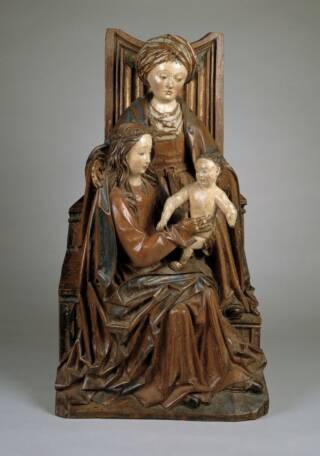Early in 2024, Godelinde visited Leiden University in the Netherlands to participate in the workshop “Religious Imagination in the Late Medieval Low Countries”, held from 16 to 19 January and organized by Lieke Smits, Veerle Fraeters, Anna Dlabacova, and Barbara Baert. The workshop resonated powerfully with the project’s theme of lived religion; it zoomed in on the religious imagination as a spiritual skill, that is, as something trained and developed, with a particular focus on how religious writings, objects, and visual culture interplayed with such practices. The event workshopped papers to be published in a special issue of Ons Geestelijk Erf, a journal of Low Countries religious culture.
The draft article that Godelinde presented traced how a medieval convent from the eastern Low Countries attempts to reimagine female saints’ legends to rewrite the history of the community. The source discussed is one of the sister-books that Godelinde looks at it in her “Cripping Sisterhood” project. Other papers likewise spoke to the themes of lived religion and community at the heart of Godelinde’s project and the team’s. Some papers considered, for instance, medieval believers’ engagement with the materiality of relics, prayer books and songbooks, as well as readers’ interaction with the content and form of such texts. Others investigated the range of roles or sensations a text can script for a variety of audiences. Two thought-provoking keynotes explored modern imagination practices: religious theme parks and transformative reading. Throughout, the researchers presenting were assigned two respondents, one of whom was another speaker and one of whom was another expert in the field, a format that resulted in very productive discussions.

The workshop has highlighted for Godelinde the many ways in which lived religion involves believers’ embodied practices and conscious and unconscious spiritual training (of their imagination, for instance). This concern with skill opens an avenue into considering if and how medieval disability inflected the imaginative practices central to medieval lived religion and how medieval disabled individuals responded to the construction of disability in their community. For instance, in the Emmerich sister-book, a prioress (the female head of the community) is depressed by the loss of motor function in her arm and fears being a burden to her community, yet also develops a special devotion to a sculpture of Saint Anne, Jesus’ grandmother, often shown holding the Virgin Mary and baby Jesus in her capacious arms. Is the abbess reenvisioning her understanding of her role in the community through imagination practices, or does the statuette reinforce particular ideas about what bodies and minds are considered normative? Stay tuned as the project tries to answer such questions!
Image: Anna Selbtritt, c. 1500–1520, northern Low Countries, oak and walnut, paint, gold leaf, 73.0 cm x 38.5 cm x 29.0 cm, Museum Catherijneconvent, Utrecht, the Netherlands. Photo: Ruben de Heer. https://adlib.catharijneconvent.nl/Details/collect/41834
